EE 5G review: 48 hours with the OnePlus 7 Pro 5G – how fast is it?
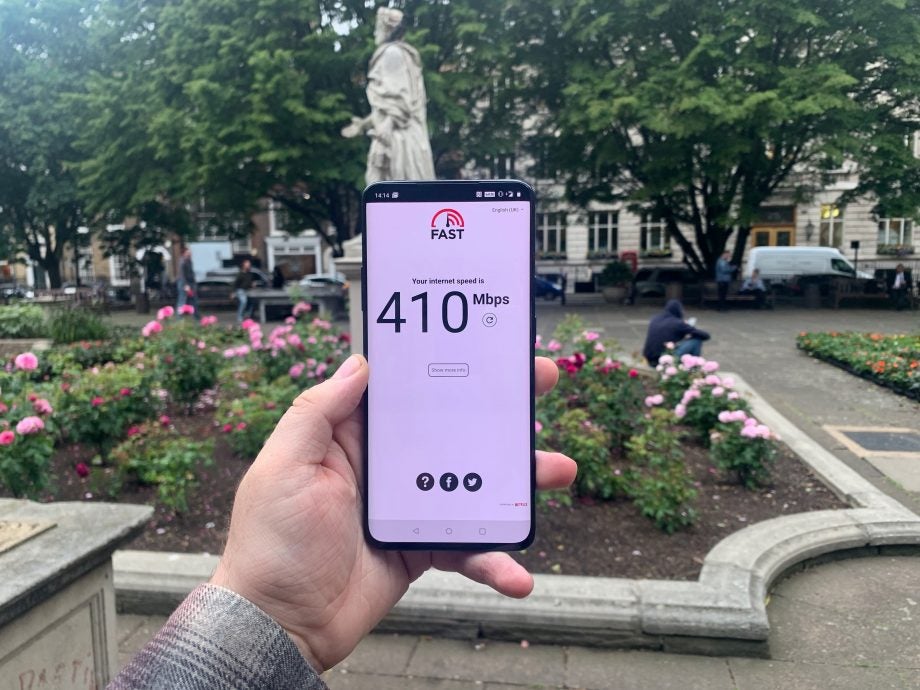
With the EE 5G network officially available in select locations across the nation, I grabbed the first available 5G phone, the OnePlus 7 Pro 5G and zipped around London putting that shiny new network to the test to find out what kinds of speeds I could achieve.
EE’s 5G network is the first example in the UK to offer active 5G connectivity. At the time of testing, it’s active across six major UK cities: Cardiff, Belfast, Edinburgh, London, Manchester and Birmingham. I plan on testing speeds in each of these cities in the coming days to see how much the experience may differ for early adopters in each location, but for the time being, here’s how London’s 5G experience stacks up.
Related:
It seems as though EE has prioritised tourist hot-spots, areas with high foot traffic and any other choke points found within its existing 4G network during commuter hours or whenever things seem busier than normal. Such locales include Covent Garden, Soho, St Paul’s and Chancery Lane.
Although the focus has been placed on outdoor areas as that’s where signal is strongest, I conducted a number of speed tests from within the shopping centre that skirts Canary Wharf tube station and the results still clocked it a four times that of equivalent 4G speeds – 120Mbps instead of 30Mbps. Oddly enough, tests conducted from Trusted Reviews’ Canary Wharf office let the phone display the all-important ‘5G’ marker, but didn’t actually offer the improved speeds encountered elsewhere.
According to EE’s representatives, its 5G network is currently being enhanced and improved upon each and every day, with additional locations, like Leicester, Sheffield and Coventry on track to receive 5G before the year’s end. EE is in this endeavour for the long-run and as such the speeds available are likely to fluctuate (and hopefully improve) in the months to come.
5G speeds in central London & key train stations
Once I’d charged my OnePlus 7 Pro 5G and popped a new EE 5G SIM inside, I set out to hit several 5G-capable areas across the capital, where I would compare the available 5G speeds with the current 4G speeds.
Covent Garden (outdoors, 2.50pm, June 4, 2019)
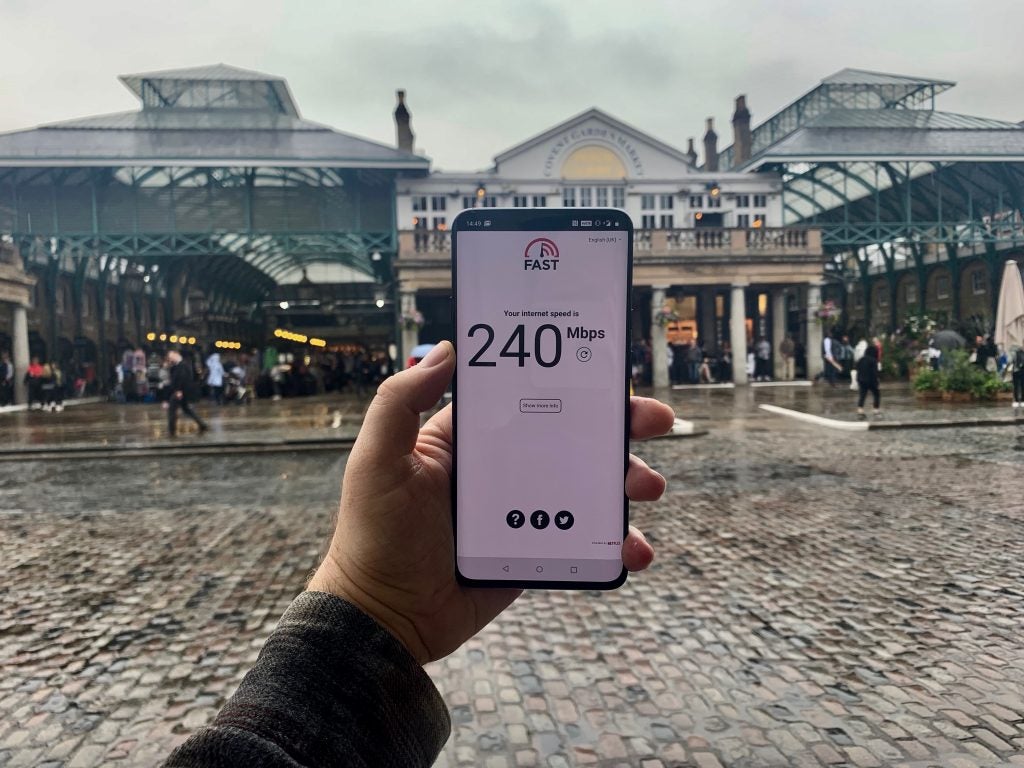
5G speeds
This is a strong example of the sheer speed benefits 5G can offer when directly comparing to 4G. Covent Garden is a massively busy area and I found 5G coverage impressive wandering around. See the above picture for the 5G speeds and the below for the 4G. Both using a OnePlus 7 Pro on EE.
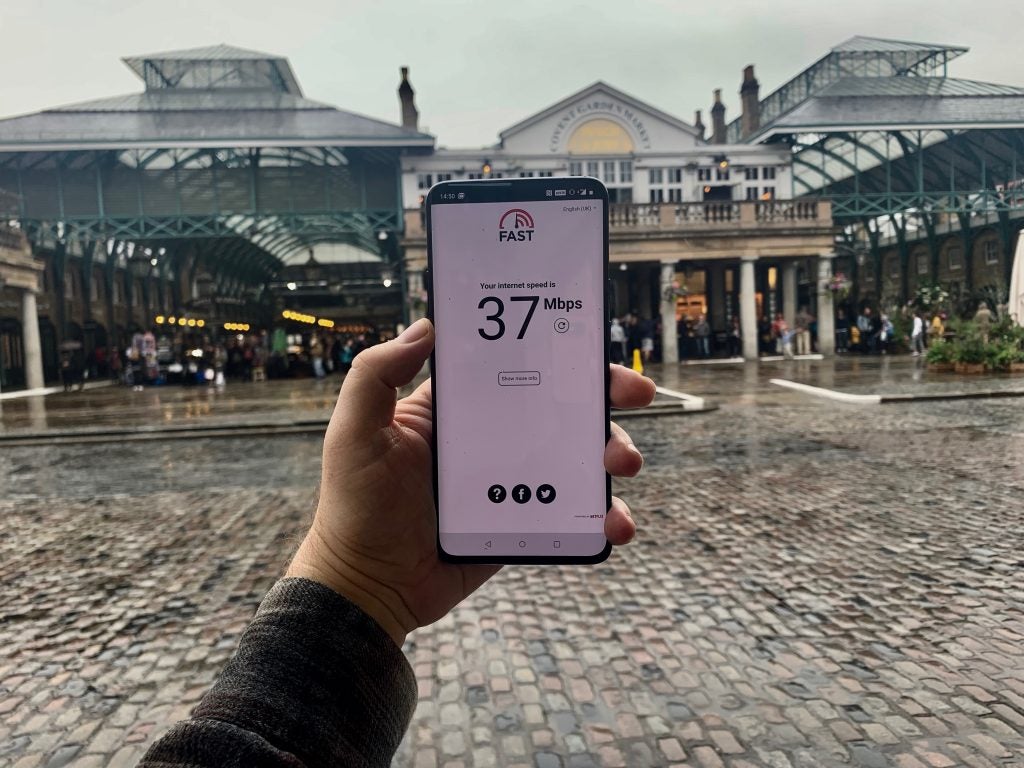
4G speeds
Apple Store, Covent Garden (outdoors, 2.45pm, June 4, 2019)
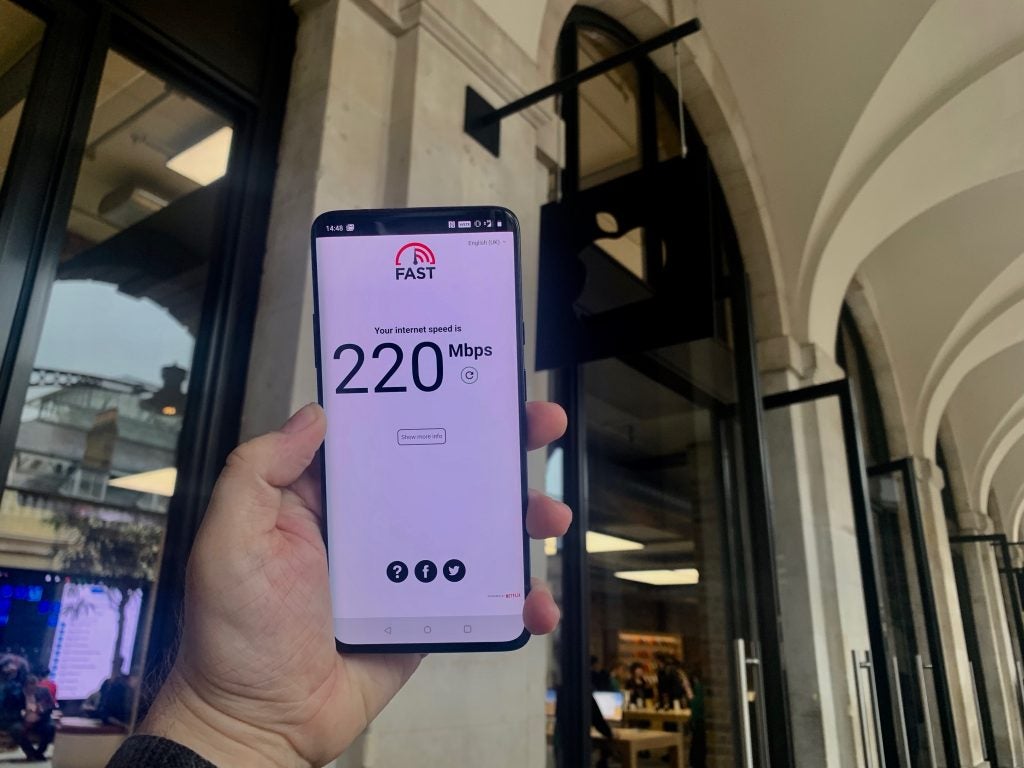
It’s heavily rumoured the iPhone 11 won’t support 5G, but at least you get great 5G speeds around its Covent Garden store…
Soho (outdoors, 2.15pm, June 4, 2019)
Some of the fastest speeds I managed to hit were around Soho, specifically in Golden Square. 4G speeds were very impressive in this area too, often hitting 250Mbps.
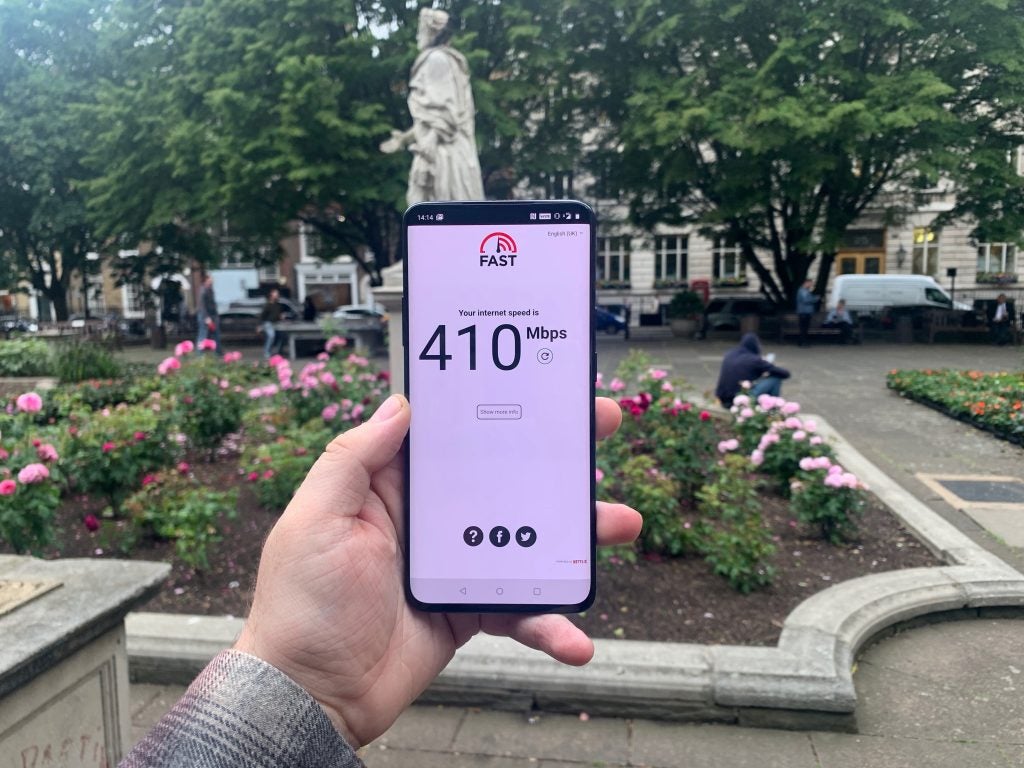
Walking around the area, from Charing Cross station into Soho and then back to Covent Garden, I had the 5G icon showing for much of the journey. Notable black spots were Picaddily Circus and the area around Dover Street Market.
Charing Cross station (outdoors, 1.57pm, June 4, 2019)
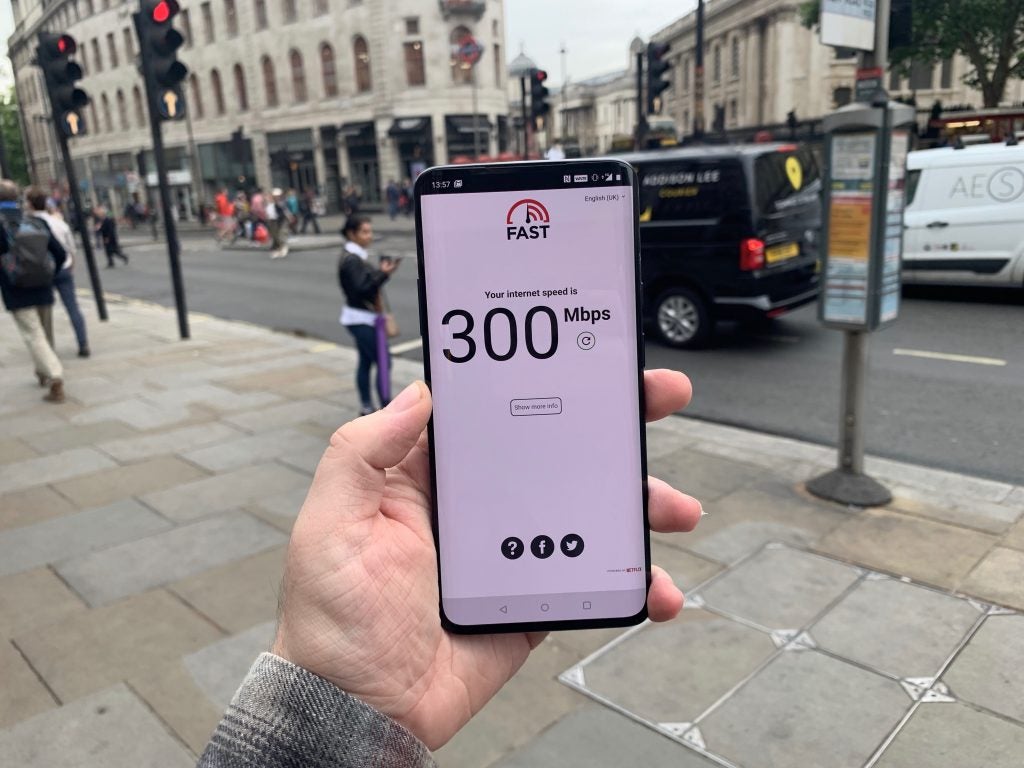
Speeds were consistently high outside Charing Cross station and around The Strand.
Canary Wharf station (indoors, 1pm, June 3, 2019)
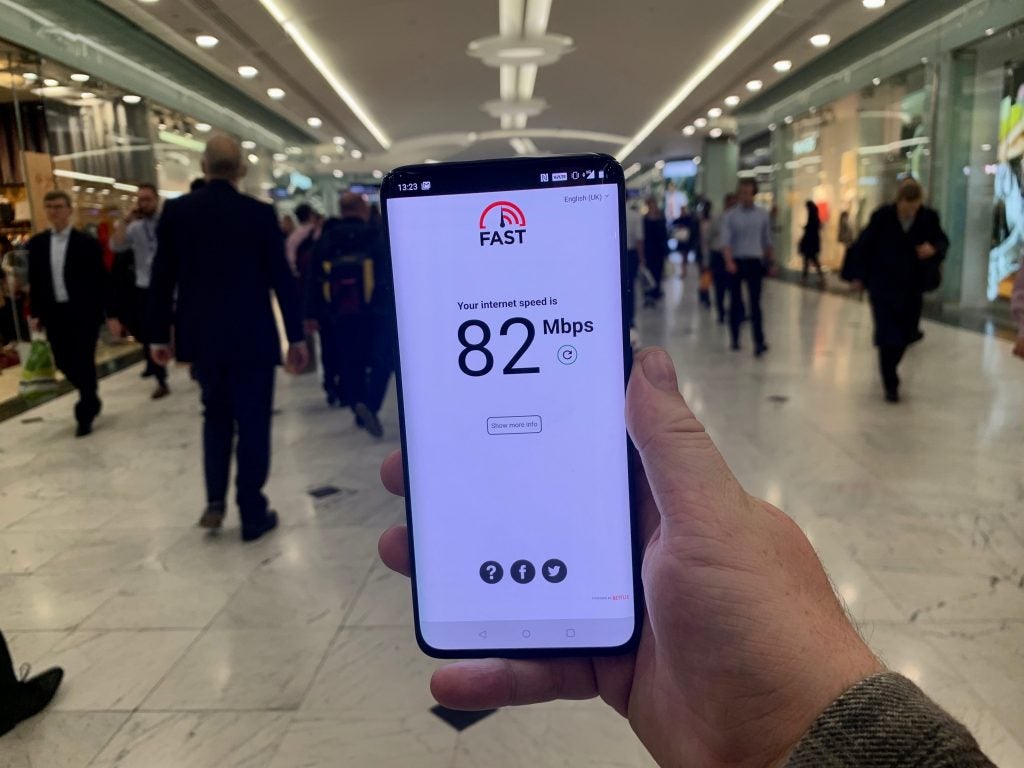
This one was more of a surprise. EE is focussing a lot of 5G improvements to outdoor sites (like the ones listed above) but that’s not to say there’s no indoor coverage at all. Inside the shopping centre surrounding Canary Wharf station I got a constant 5G signal.
On the train (indoors, 4.45pm, June 3, 2019)
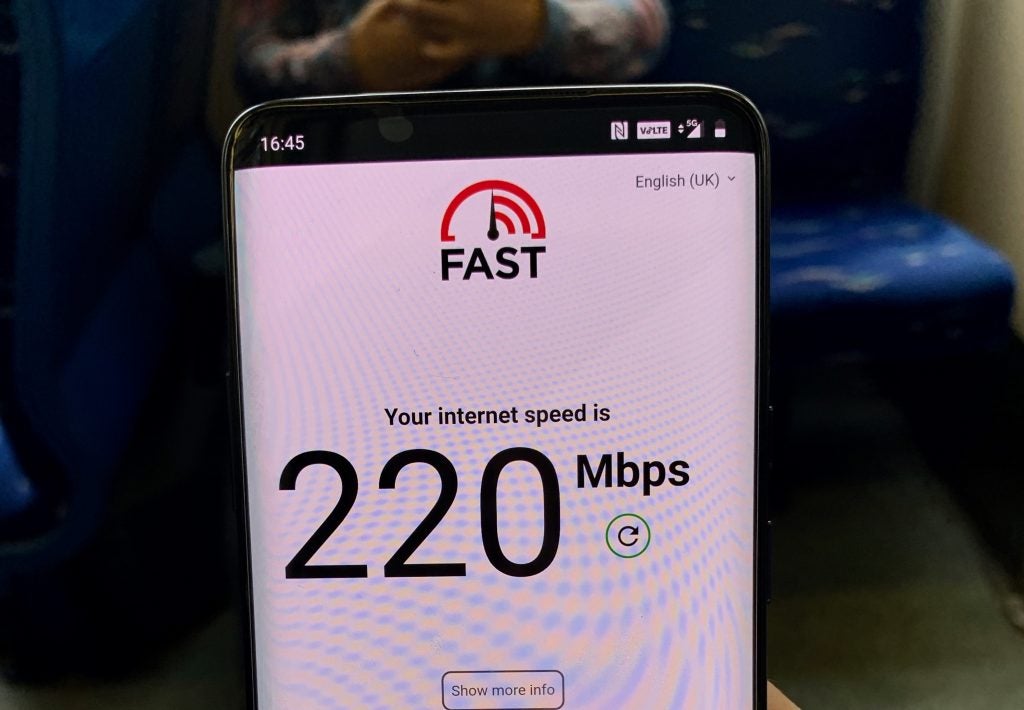
I even got a very strong 5G signal with impressive speeds on a moving DLR train between Canary Wharf and Heron Quays station.
While the most immediately obvious 5G benefit is sheer speed, it’s not all about loading that Netflix video or downloading a podcast quicker. One of my favourite 5G benefits is the removal of the annoying bottleneck you’ll find so often on 4G networks.
If you’ve tried loading up Instagram, Facebook, or just browsing the web at a busy train station or even in bustling parts of a town you’ll know the pain of seeing a full signal bar, but getting nothing when you try and browse. 5G should solve this.
The Phone
Look through the selection of currently available EE 5G phones and you’ll instantly see a theme: they’re all big. Samsung created a special version of its S10 (Samsung Galaxy S10 5G) with a bigger screen than anything else it sells for 5G and Huawei’s first 5G device, the Mate X, has a pocket-busting 7.2-inch panel.
Thankfully, for OnePlus anyway, the 7 Pro is already a phone that just about dwarfs the competition when it comes to size. Instead of building a separate larger phone for 5G, OnePlus just made its 2019 flagship very big in the first place.
Put the OnePlus 7 Pro side-by-side with the OnePlus 7 Pro 5G and you’ll see two phones that look exactly the same. They both weigh the same, have the antennas in the same spots and have the same thickness.
Where the difference really lies is inside. OnePlus has completely rebuilt the phone internally, stretching the cooling system across the entire back and halving the size of the NFC chip. There’s also the Qualcomm X50 modem tucked in there enabling 5G, alongside the Snapdragon 855 chipset.
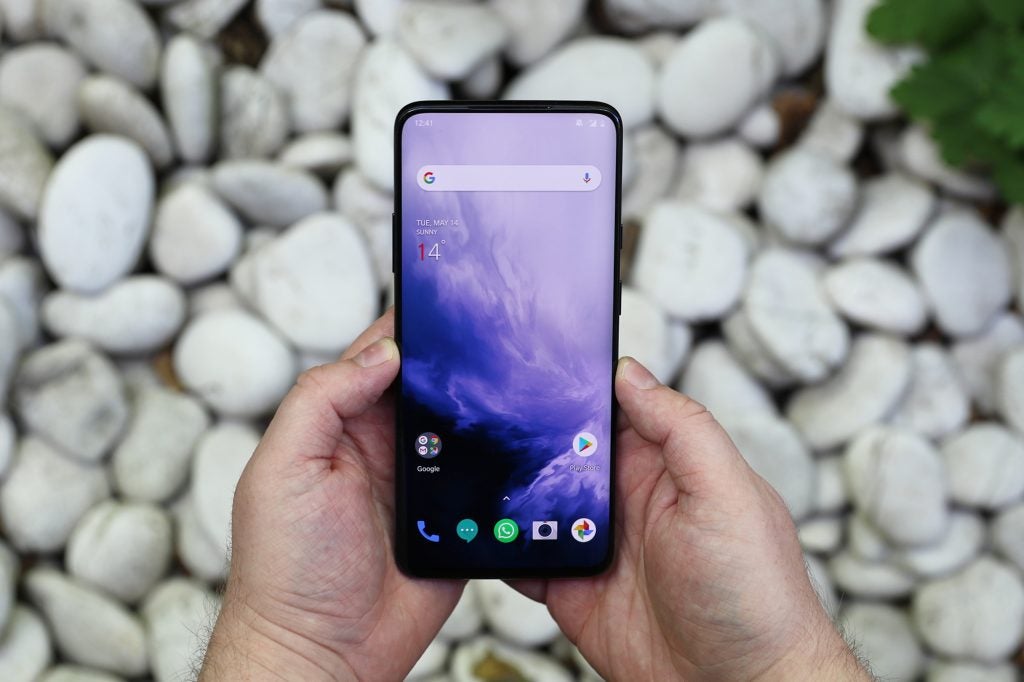
That extra-large cooling system should (and in my experience, so far does) ensure the OnePlus 7 Pro 5G doesn’t get any more noticeably hot than the non-5G version.
5G battery life – findings so far
My biggest concern with not only the OnePlus 7 Pro 5G, but all 5G phones, is battery life. OnePlus hasn’t upped the size of the battery here, and with the 7 Pro not being one of the longest-lasting phones anyway, that extra strain of 5G is worrying.
Qualcomm has promised that all 5G phones with an 855 processor and X50 modem (which the OnePlus 7 Pro 5G has) will give you a day’s worth of power – we’ll see about that.
There are a couple of things to mitigate 5G battery drain: a Smart 5G option in the Settings that’ll automatically switch between 5G and non-5G networks and of course the usual battery saver mode.
A huge drain on the OnePlus 7 Pro’s battery life is the admittedly fantastic 90Hz 6.7-inch QHD+ display. As this display refreshes 90 times a second, rather than 60 on most phones, it’s using more battery with everything you do.
I’ve only been using the OnePlus 7 Pro 5G for a day and most of that time has been spent running from London landmark to London landmark, so hardly a fair representation of battery life. But I will say I managed to go through the fully-charged battery between 10 am and 5 pm. At least there’s the exceptionally fast Warp Charge that’ll juice you back up in about 80 minutes.
It’s the first 5G phone you can buy
The OnePlus 7 Pro 5G is the UK’s first 5G phone (more are coming on June 7, so it’s a short exclusivity period) and it makes perfect sense. OnePlus’ focus is speed and its ‘Never Settle’ slogan shows it’s always trying to be the first to market with something. This is the fastest phone, performance-wise, around, and now it has access to the fastest network. You’ve also got the legions of 5G fans who will happily queue on launch day to be part of it. This isn’t really something you’d see with Huawei and LG.
It’s also a terrific phone with the only real weakness coming in the good (but far from great) camera. It has the best display I have ever used on a phone; has cleverly designed software that’s actually an improvement on Google’s version of Android and a novel approach to getting rid of the notch.


